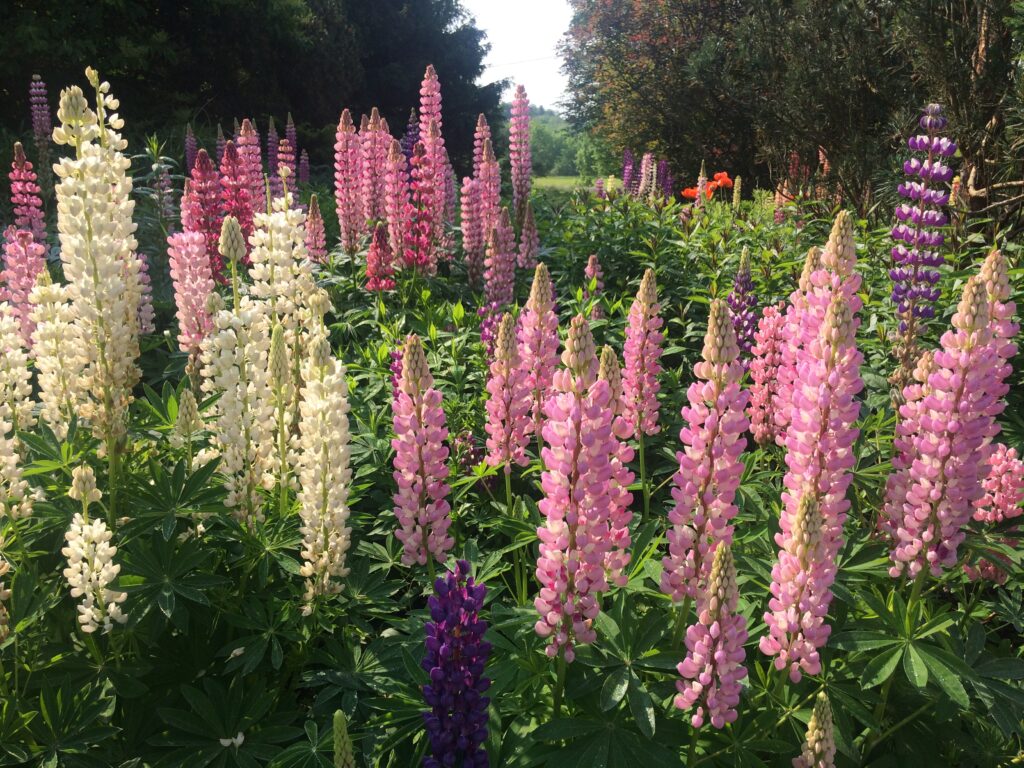Ask A Master Gardener – Perennial Problems: Lupines
October 2024 Puslinch Pioneer
By Danielle Gignac, Guelph-Wellington Master Gardener
Photo: Lupines (by D. Gignac)

[Q: Why do my lupines keep dying? I thought they were perennials]
When choosing plants for your garden, one of the first things you’ll want to know is how long they will
live: are they annuals or perennials?
Annuals have one growing cycle: they grow, flower, produce seed, and die. These are great for areas of a
garden that you may want to change from year to year, or for planters. Often they are bright and
colourful and produce flowers abundantly. Think of petunia, cosmos, celosia, sunflower, or sweet pea.
Perennials, on the other hand, live longer than two years. Some are evergreen and others herbaceous
(dying back each autumn and returning in spring). They tend to grow larger each year, often
necessitating division of the plant. Some common examples include hosta, sedum, peony, or rose.
To complicate things further, there are also biennials, which produce foliage the first year, and then
flower and produce seed in their second year before the plant dies. Many plants in the brassica family
are biennial, like kale or collards, as well as root vegetables like beets and carrots. Biennial flowers
include foxglove, canterbury bells, or sweet William.
And to finally answer the lupine conundrum, there is a further category referred to as “short-lived”
perennials which live 3-5 years and either die or reduce blooming after that time. Lupines are one of a
number of plants which fall into this category. Others include hollyhock, columbine, blanket flower,
coral bells, or delphinium.
Thankfully, many biennials and short-lived perennials will self-seed if you don’t dead-head them, and
will germinate the following spring as new plants. This works especially well in “cottage gardens” where
the layout is looser and can shift over the years. If you want to encourage self-seeding, make sure the
soil in the garden is left exposed. A thick layer of mulch will not allow seeds to germinate or take root, in
most cases. If you want to be more deliberate about plant locations, you can collect seeds and start
them yourself in pots. Try to identify the best flowers from the year and gather the seeds from those
ones so you ensure the genetics you are carrying forward are the ones you want. Highly cultivated
varieties tend to be more short-lived than the species, so consider that when planting as well.
To have a well-rounded garden, you’ll likely want to have some of each type of plant. Perennials will
provide the overall base and form of the garden, as well as consistent foliage and variation in colour
throughout the season. Biennials will add some variation from year to year, and you’ll want to ensure
you are starting new ones each year, or allowing them to self-seed, so you won’t have to skip a year of
blooming. Similarly, keep in mind that your short-lived perennials may need replacing every few years.
Finally, include annuals for colour and variety. A garden can look very different from year to year just by
changing up the annuals you use.
